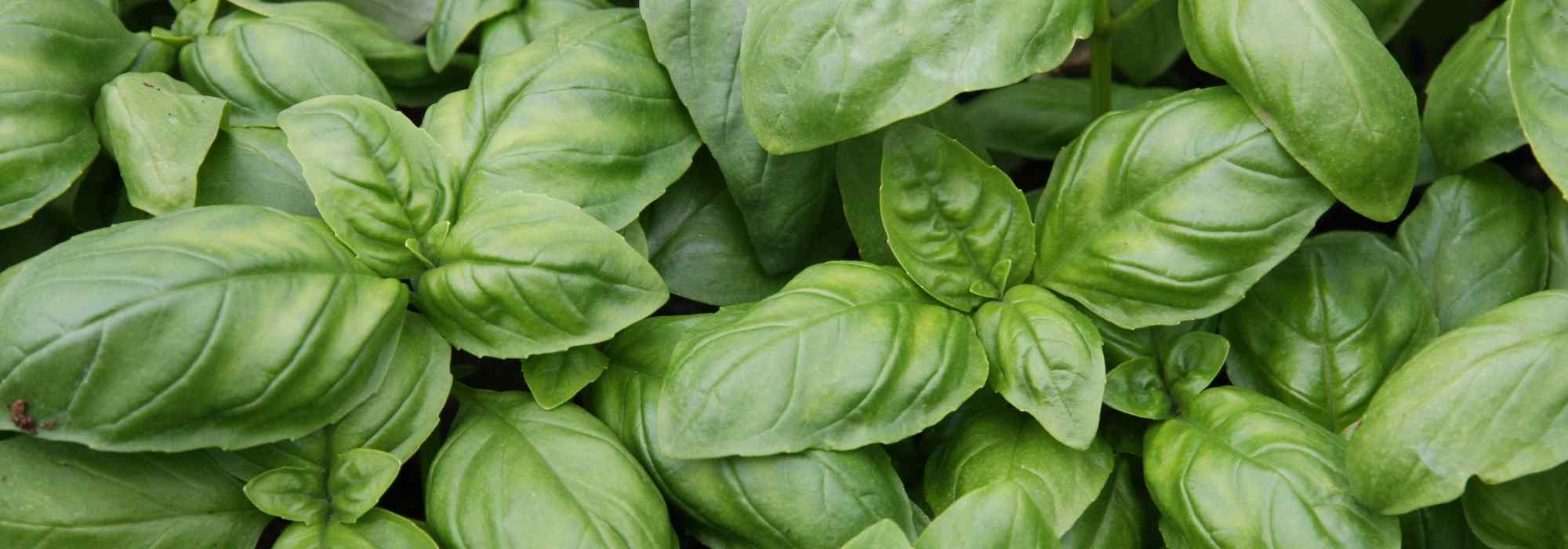
6 must-have basil varieties
Our favourite basil varieties to grow in the garden or in a pot.
Contents
basil (Ocinum basilicum) is an annual plant easy to grow, used since antiquity in the Mediterranean basin for its aromatic and medicinal properties.
Basil comes in several dozen different varieties: some offer original flavours, others are prized for their ornamental qualities, thanks to the colour of their foliage or their flowering; others again are essential ingredients in Mediterranean or Asian recipes.
Here is our selection of 6 basil varieties notable for their flavour or decorative qualities
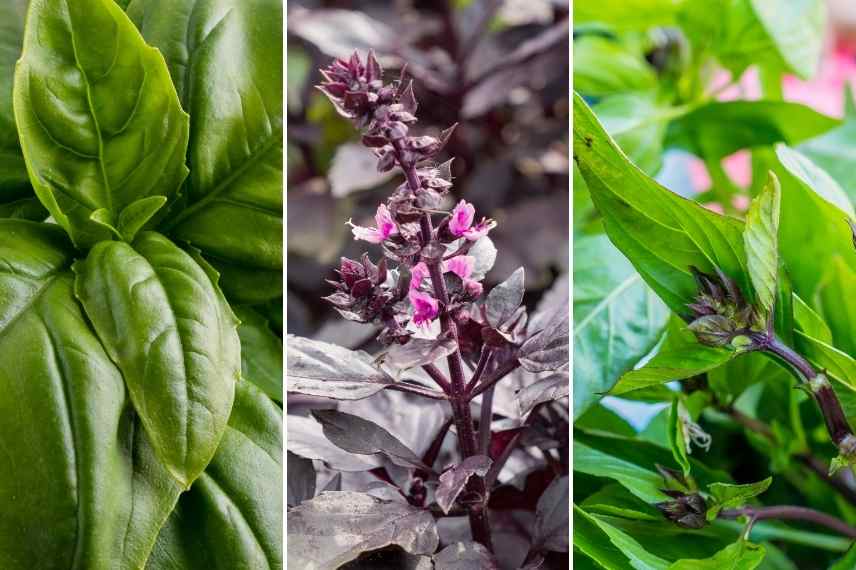
Genovese, purple and Thai basil… basil varieties are very diverse
Genovese basil: the essential classic for traditional pesto
It’s one of the most popular, but an essential variety: the basil ‘Genovese’ or basil ‘of Genoa’ is the variety traditionally used in the famous Italian pesto recipe, pesto alla genovese.
In fact, this recipe gave rise to Provençal pistou, usually prepared with the ‘Marseillais’ basil variety.
Its large, broad leaves of deep, glossy green are slightly puckered. They give off an intense green aroma, a benchmark for classic basil.
This basil, with a bushy habit, reaches at ripeness a height of 40 to 50 cm with a spread of 15 to 30 cm.
Its + :
- traditional variety for making a genuine Italian pesto
- distinctive, pronounced aroma
Sowing is done from March to May, for a harvest from late spring to early autumn.
Basil dislikes drought and water stress, which tend to make it bolt to seed prematurely. As soon as the first flowers appear, water the plant and pinch the stems between your fingers to stimulate further leaf production.

Organic Genovese basil
Read also
Basil: sowing, planting, growingGiant basil 'Monstrueux Mammouth': impressive leaves
ThisMammoth basil takes its comical name from the remarkable size of its leaves, which can be as large as a hand.
Its bright green leaves are ovate in shape, slightly dentate and have a blistered texture.
They diffuse a very pronounced scent, particularly appreciated in salads or for seasoning sauces and marinades.
This is a very productive variety with a bushy habit, reaching 40 cm in height at ripeness with a spread of 30 cm.
Its + :
- very large leaves
- powerful scent
- very prolific variety
Sowing is carried out in March or April directly in place, once any risk of frost has passed. Harvest takes place about 3 months later, on the bole and as required according to needs and development.
This basil requires little maintenance : to stimulate the growth of lateral shoots and favour a more regular habit, pinch the top of the stem regularly between fingers.
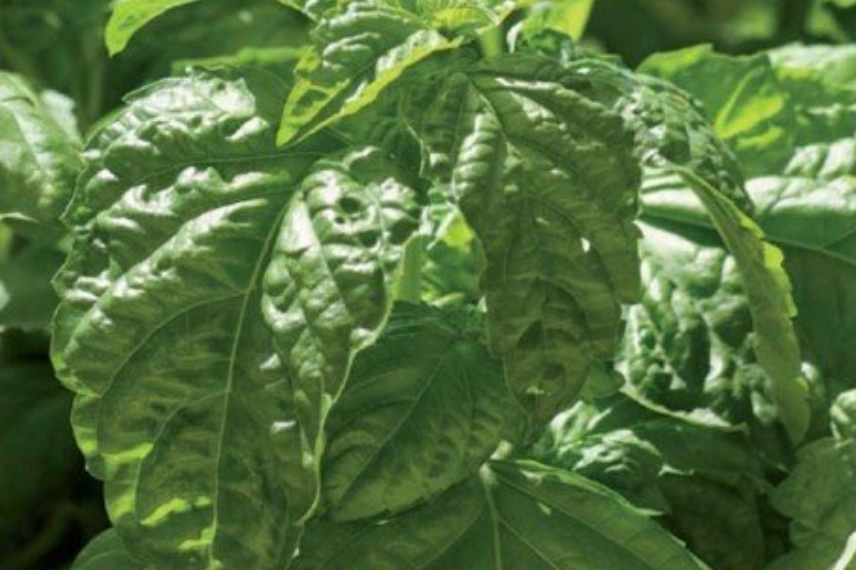
Basil ‘Monstrous Mammoth’
Discover other Basil
View all →Available in 1 sizes
Available in 1 sizes
Available in 1 sizes
Available in 1 sizes
Available in 1 sizes
Available in 1 sizes
Available in 1 sizes
Available in 1 sizes
Available in 1 sizes
Available in 1 sizes
Thai basil: a staple in Asian cuisine
Thai basil or Indonesian basil differs from classic basil varieties. This Thai variety, native to Southeast Asia, has small, fairly thin, pointed, ovate green leaves.
Its stems and inflorescences display a decorative deep purple‑violet, contrasting with green of foliage.
Its habit is dense and bushy. This compact basil reaches about 30 cm in height and spread at ripeness.
Widely used in Asian cuisine, especially Thai, it is incorporated into spring rolls, stir‑fries of vegetables or meats, soups or slow‑cooked dishes such as curries. It also differs from traditional basil by its spicy aroma, with notes of lemon, tarragon and anise.
Its benefits :
- attractive colourful ornamental flowering
- distinctive exotic aroma
- its scent is said to repel flies and mosquitoes
Thai basil is sown in window boxes or pots in March or April. Sowing can be done directly in garden soil from June.
Leaves are harvested from summer to autumn, preferably in the morning to make best of all aromas.

Thai basil
Read also
Sowing of aromatic plantsBasil 'Dark Opal': a surprising colour
basil ‘Dark Opal’ astonishes with its colour. If foliage of classic basils is usually green, this one rewards with deep red foliage tinged with purple, almost black.
Its large smooth, glossy and dentate leaves resemble those of basil ‘Genovese’ and tend to darken as the plant develops. In summer, it also bears pretty small pink or mauve flowers.
Like many basil varieties, it has a bushy habit, 30–40 cm tall with a 15–20 cm spread.
Its rather peppery aroma will enhance many dishes: salads, Mediterranean vegetables, cheeses, fish…
Highlights :
- ornamental plant for garden, in borders or in pots
- original decorative colour in cooking
- slightly spicy flavour
Basil ‘Dark Opal’ appreciates some moisture, without liking waterlogged soil. Partial shade will help bring out full intensity of its colour.
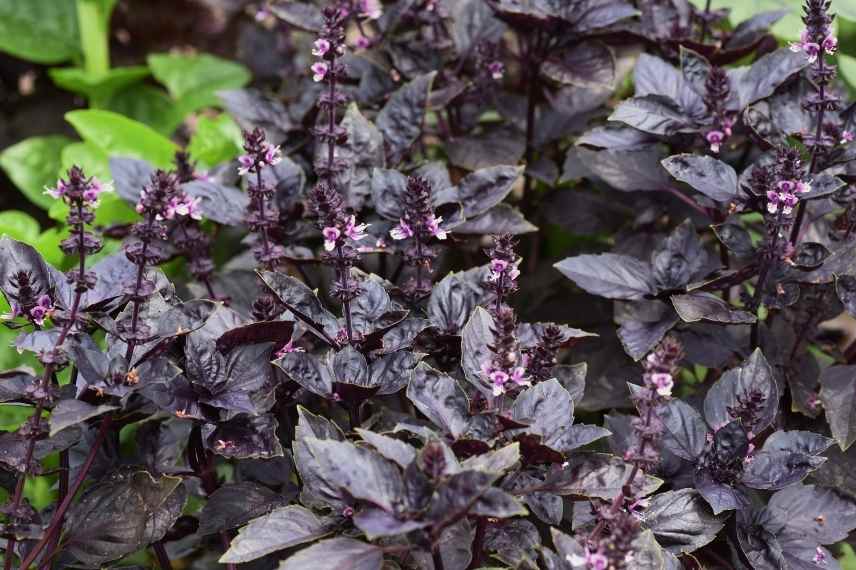
Basil ‘Dark Opal’
Basil ‘Magic Mountain’: one of the rare perennial varieties
If most basils are herbaceous annuals, disappearing at the first frost at the end of the year, there are a few rare “perpetual” basil varieties. This is the case for the basil ‘Magic Mountain’, also known as Kenyan basil.
Its semi-evergreen foliage is made up of large green leaves with contrasting purple veins. This basil tolerates temperatures down to -5°C.
The flavour of its leaves, used to season dishes or as an infusion, is quite strong: the aroma is peppery, even camphoraceous.
Slightly larger than its relatives, this shrub can reach 70 cm to 1 metre in height.
In summer it is adorned with small pink or violet flowers in long spikes, much appreciated by pollinating insects and also very tasty in cooking, in salads or on cheese.
Advantages :
- one of the rare perennial and somewhat hardy varieties
- culinary and ornamental plant
- distinctive, pronounced aroma
Despite its hardiness, this basil remains quite sensitive to cold. It can be grown outdoors in regions with mild winters (Mediterranean, south Atlantic coast), in a sheltered spot, in well-drained soil and, ideally, protected by a frost cloth.
Elsewhere, favour pot cultivation, allowing it to be sheltered in winter in a cool, bright place (greenhouse, conservatory…).
Unlike annual basils, which are propagated by sowing, basil ‘Magic Mountain’ is very easy to propagate from cuttings.

Basil ‘Magic Mountain’
Basil 'Cannelle' : a surprising aroma
Certain varieties of basil offer original, unexpected flavours in cooking. This is the case with Cinnamon basil, native to Mexico.
Its medium-sized ovate green leaves exude a spicy aroma combining cinnamon and clove. They are eaten raw to best enjoy their flavours and work wonders in sweet preparations such as compote, sorbet…, in salads and even as an infusion.
Its stems and flowers are purple. Its compact habit suits cultivation both in garden and in pots, on balcony or terrace, for attractive decorative effect.
Highlights :
- exotic flavour
- ornamental plant
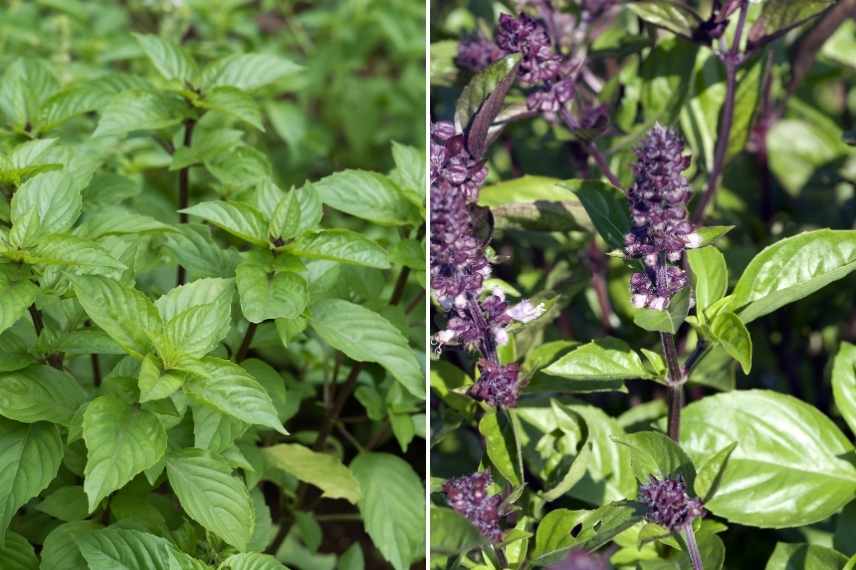
Cinnamon basil
- Subscribe!
- Contents
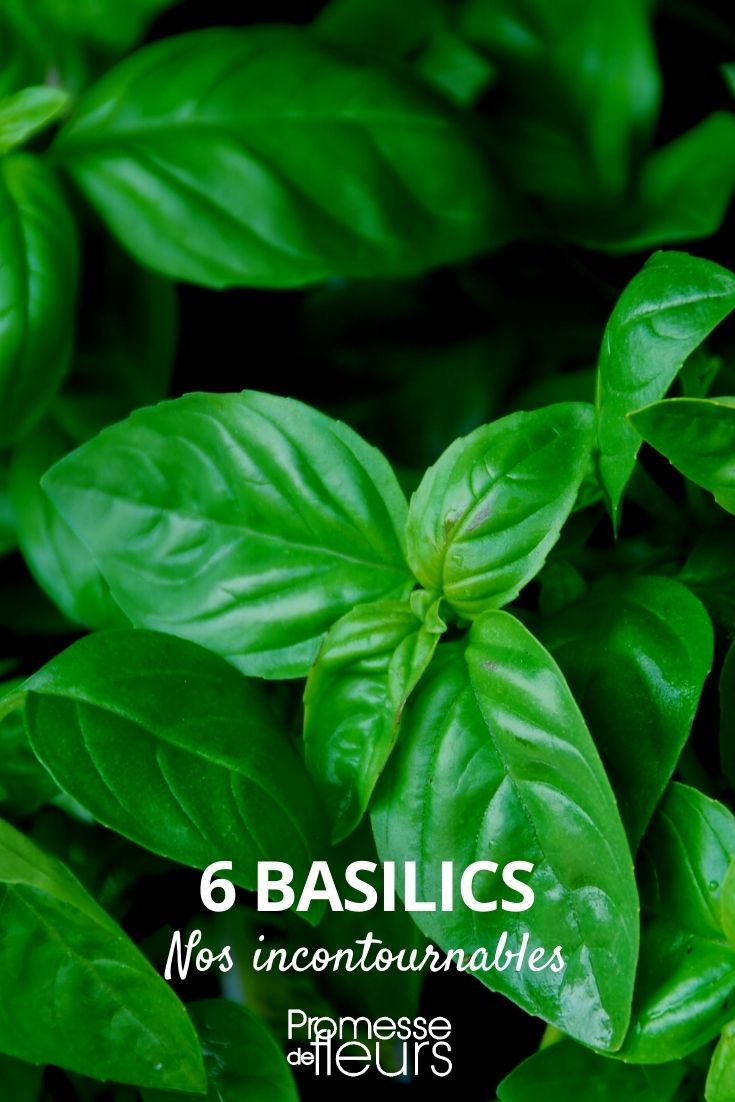






























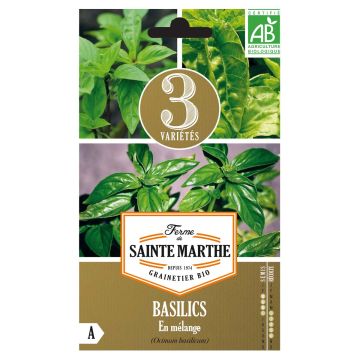
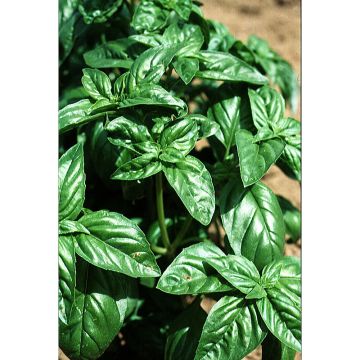
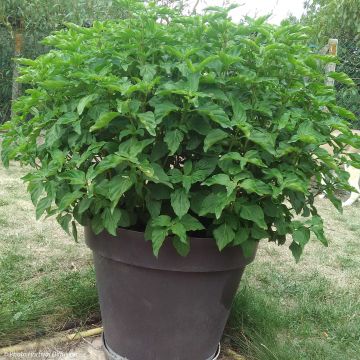
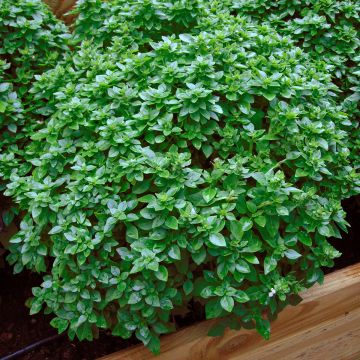
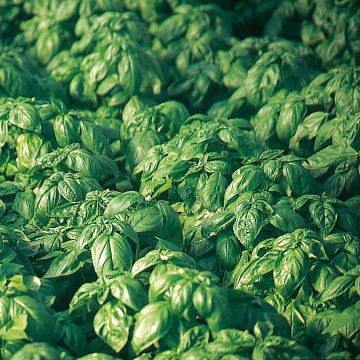
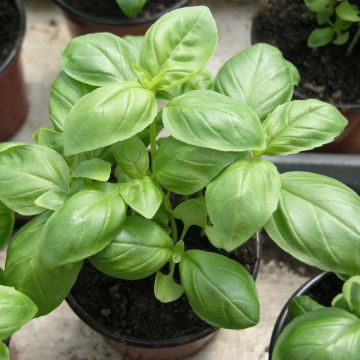
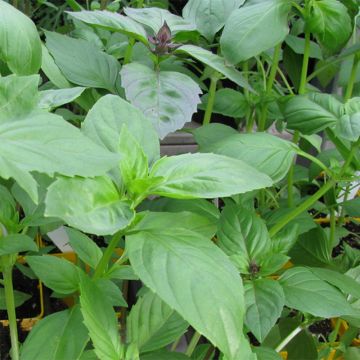
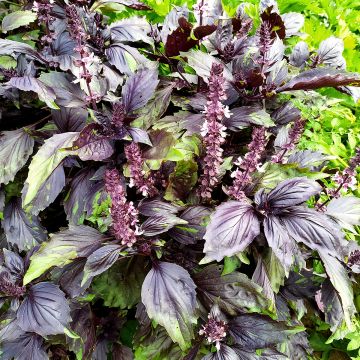

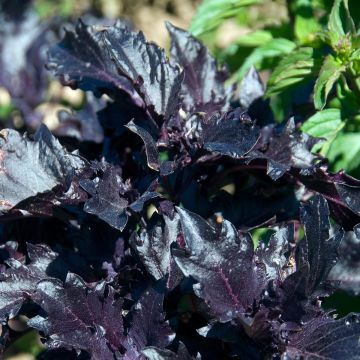
Comments